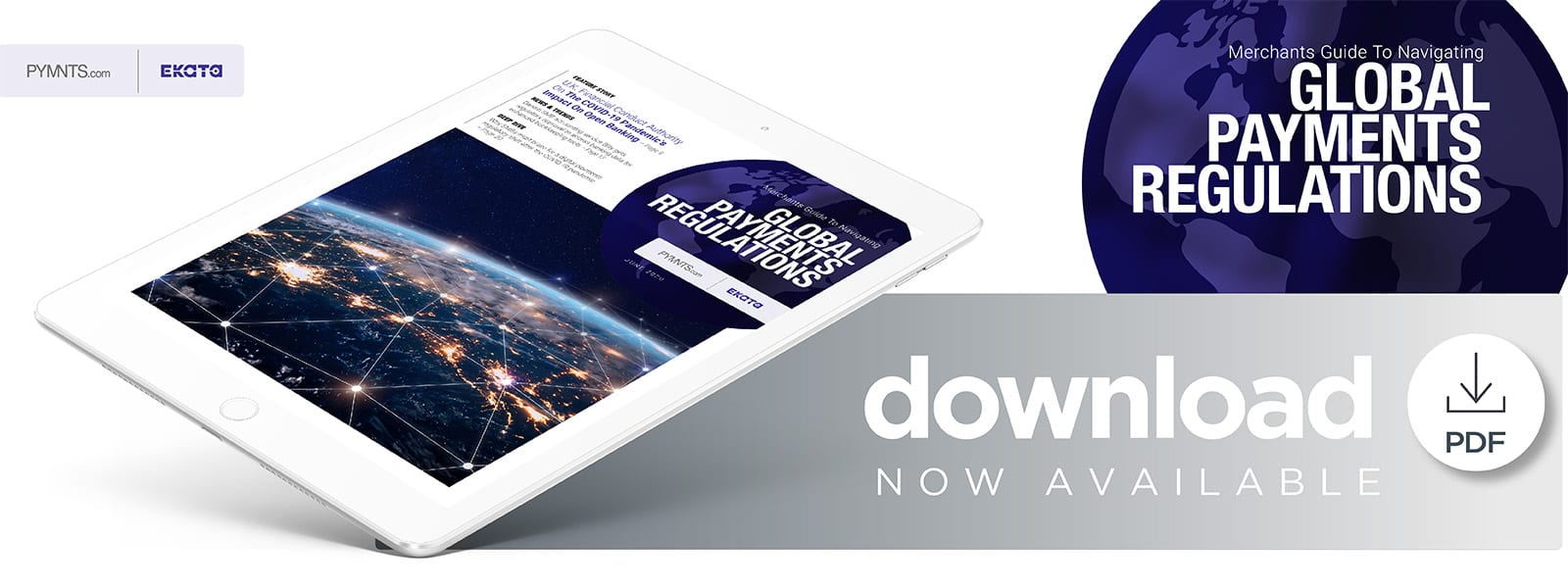Deep Dive: How SMBs Can Brace For Changing Digital Payment Regulations

Keeping up with customers’ shifting behaviors and preferences amid changing regulations is a familiar challenge for today’s small- to medium-sized businesses (SMBs), but the pandemic’s impact on the scale of digital payments has steepened the learning curve for these merchants.
SMBs around the globe are dealing with an unprecedented surge in online payment volumes as consumers eschew in-store payments for eCommerce transactions that lack the risks of in-person contact. One study found that card-not-present (CNP) transactions rose 29.7 percent from the week of March 2 to the week of June 1, for example, and another recent report revealed that 40 percent of consumers are conducting more day-to-day transactions online.
This trend is beginning to moderate as consumers in some markets return to brick-and-mortar stores, but there are other ways in which the pandemic has prompted online payment shifts.
Months of worry regarding the potential health risks of cash and cards have motivated consumers to use other payment methods, including contactless transactions, which alter customers’ online and in-store payment interactions. U.S. and European merchants alike have seen increases in contactless payments use, with card network Mastercard noting in late May that 78 percent of its transactions in the latter market are now contactless. Fifty percent of U.S. consumers claimed they made at least four contactless transactions in April.
These developments show how drastically the pandemic is affecting commerce methods, revealing that merchants around the world must be prepared to support seamless contactless payments and other digital transaction methods. Quickly adapting to these shifts can be difficult in markets like the EU and U.K., where strong customer authentication (SCA) and general data protection regulation (GDPR) requirements are being adjusted to support customers’ changing needs during the pandemic.
This month’s Deep Dive explores how the pandemic is affecting the use and regulation of online payment methods and what these changes mean for SMBs.
Examining SMBs’ Regulatory Struggles
Addressing growing digital payments reliance and usage has been many regulators’ priority for years. SCA requirements that affect merchants in the EU and U.K. require additional authentication when contactless or online transactions hit certain payment limits, for example. These markets also enforce GDPR, which protects the data that goes along with such transactions, including customers’ account and card numbers, physical and email addresses and names.
Lawmakers have also released addendums to these rules based on shoppers’ and SMBs’ needs during the pandemic. The European Banking Authority (EBA) increased the limit for contactless payments exempt from SCA requirements from 30 euros ($33.66) to 50 euros ($56.13), for example, and similar shifts have been made regarding the types of data that can be legally transmitted under GDPR following questions over the sharing of personal healthcare data.
The pandemic is adding to the frictions SMBs and regulators in the EU and the U.K. are experiencing. Smaller businesses are often unaware of what these rules entail or how they apply to data and online transactions, with a 2019 study finding that 39 percent of U.K. SMBs did not know who GDPR affected. Confusion and wariness regarding SCA is also widespread, as another 2019 report noted that 65 percent of travel, hospitality and retail merchants believed SCA would negatively affect their businesses. Only 25 percent of EU retailers were aware of SCA’s requirements before its initial Sept. 14, 2019, compliance deadline, and many expected it to severely affect their customer conversions.
This continued lack of awareness means regulators are facing significant challenges in adapting these laws during the pandemic, and SMBs are witnessing increased frictions because such rules affect the emerging online transaction methods to which consumers are turning. The rise in contactless payment adoption could have more long-term impacts upon smaller merchants, however. Consumers are beginning to experiment with these payment methods, meaning businesses without the in-store technology to accept them are behind the curve. It is important for merchants to examine how contactless usage is growing and decipher what that means for the future of payments.
The Contactless Key
Contactless payment methods have been picking up steam in the EU and U.K. for some time, but the pandemic is causing a dramatic increase in their usage. This trend is likely to continue once the pandemic has receded, which could have even greater implications for SMBs.
One recent study found that 73 percent of EU consumers using contactless payment methods do not expect to alter their usage once the pandemic has passed, while 40 percent adjusted their mobile wallet preferences to use their primary payment cards. It is particularly important for SMBs in the EU to pay attention to these trends, as SCA directly affects how such payments are finalized. Contactless payment caps have been increased, but the uptick in usage means merchants are attempting to process more of these payments with only a minor bump in the individual limit to speed along transactions.
Additional fragmentation regarding these payments could also sow confusion among SMBs in the EU and the U.K. when determining which transactions can or cannot be approved. SCA requires consumers to be authenticated using at least two distinct identifying factors from among three categories: knowledge, inherence and possession. There are exceptions to the requirement, but it is not always clear which transactions are exempt.
SMBs also rely on their payment partners to ensure compliance, meaning the latter must have detailed knowledge of how fast contactless payments are growing, how limits are changing and what steps regulators are taking to address such developments.
Regulations such as SCA are complex, but they could ultimately give European SMBs a leg up on merchants in other markets that are experiencing surges in contactless payments usage.
The U.S. does not currently have a regulatory equivalent that can assist SMBs in navigating these payment shifts, even as 57 percent of American consumers in a recent survey stated that they would be more comfortable using contactless or mobile wallet methods for their daily transactions now than they were before the pandemic. This indicates that contactless payment methods are gaining ground worldwide, and that the importance of regulating this payment type is only growing.
It will be essential for regulators around the globe to ensure that SMBs can comply with the regulations governing the payment methods that are fast finding favor with consumers.

